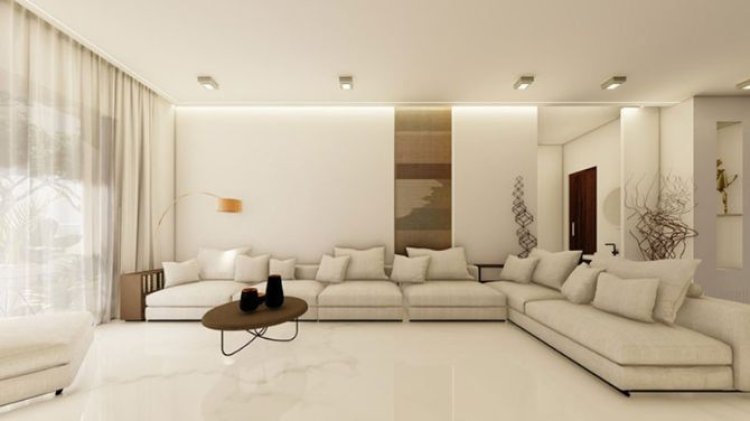Top Architecture Trends for 2024: Designing for a Sustainable, Inclusive Future
Architecture continues to evolve, blending aesthetics with functionality to address social, environmental, and technological needs.
Share this Post to earn Money ( Upto ₹100 per 1000 Views )

In 2024, key trends are reshaping the built environment, prioritizing sustainability, flexibility, and inclusivity. Here’s a look at the trends influencing architecture today and the impact they’re set to have on future design.
1. Sustainable Design and Carbon-Neutral Buildings
As the demand for environmentally conscious design grows, architects are focusing on creating carbon-neutral and energy-efficient buildings. This trend goes beyond the use of renewable materials; it also involves reducing operational emissions through innovative technologies like solar panels, green roofs, and energy-efficient HVAC systems. Passive solar design and natural ventilation techniques are becoming standard to minimize the need for artificial heating and cooling. Additionally, adaptive reuse—repurposing older buildings instead of constructing new ones—gains importance as a way to reduce the environmental impact associated with demolition and new construction. If you are looking for the Best architects in Bangalore, SR Creations are right choice for you.
For instance, using sustainable building materials, like cross-laminated timber (CLT) and recycled steel, reduces carbon footprints. Many architects are also incorporating carbon-sequestering materials that actively absorb carbon dioxide over time, promoting eco-friendly urban spaces.
2. Biophilic Design: Bringing Nature Indoors
Biophilic design focuses on integrating natural elements into architectural spaces, helping reduce stress and improve overall well-being. This trend goes beyond adding plants indoors; it includes the strategic use of natural light, organic textures, and natural forms that mimic outdoor environments. In residential, commercial, and public spaces, biophilic elements like indoor gardens, green walls, and water features create a calming, health-promoting atmosphere.
Biophilic design is increasingly popular in workplaces, healthcare facilities, and educational institutions, where studies have shown that proximity to nature can enhance productivity, reduce anxiety, and even speed up recovery times. As urban spaces continue to expand, biophilic design helps foster a connection to nature, promoting mental and physical well-being for occupants.
3. Modular and Prefabricated Construction
With demand for quick and efficient construction solutions, modular and prefabricated buildings are rising in popularity. These structures are built off-site in modules or panels, which are then transported to the final site and assembled. Prefabricated construction significantly reduces building time, labor costs, and material waste, making it a cost-effective and sustainable option. This trend is ideal for both residential and commercial projects, as well as for emergency housing and remote locations where traditional construction methods are challenging.
In addition to reducing construction time, modular designs are often flexible, allowing for easy reconfiguration or expansion as needed. This adaptability is especially valuable in urban areas, where space is limited and land is expensive. Moreover, prefabricated designs are often customizable, allowing clients to personalize the space while benefiting from the efficiency of factory-built components.
4. Smart Buildings and Integrated Technology
With advancements in the Internet of Things (IoT) and AI, buildings are becoming smarter and more responsive to occupant needs. Smart buildings incorporate technology like automated lighting, climate control, and security systems that adjust based on occupancy and usage patterns, improving energy efficiency and user comfort. Integrated technology also provides valuable data on building performance, helping managers identify areas for improvement and optimize resource usage.
For example, intelligent lighting systems that adjust brightness based on the time of day or natural light availability can reduce electricity use and create more comfortable indoor environments. Additionally, sensors can monitor air quality and temperature, ensuring healthier and more comfortable spaces.
5. Flexible and Multi-Functional Spaces
With the rise of remote work and hybrid work models, flexible spaces are becoming a staple in architectural design. Architects are designing multi-functional spaces that can be easily adapted for various uses, making spaces more versatile and cost-effective. In homes, this might mean designing spaces that can transition from an office to a guest room, while in commercial buildings, open floor plans with movable partitions allow businesses to adjust layouts as needed.
In addition to accommodating evolving work patterns, flexible spaces are essential in urban environments where space is limited. Multi-functional design optimizes square footage and makes interiors more adaptable, catering to the diverse needs of users throughout the day.
6. Inclusive and Accessible Design
In 2024, there’s a stronger emphasis on designing spaces that are inclusive and accessible to all individuals, regardless of age, ability, or background. Universal design principles focus on creating environments that accommodate everyone by considering physical, sensory, and cognitive needs. Examples include wider doorways, non-slip flooring, visual and auditory cues, and flexible layouts that allow easy navigation for individuals with mobility challenges.
Inclusivity in architecture goes beyond physical accessibility; it also addresses the need for culturally sensitive and community-focused spaces. Designers are increasingly engaging local communities in the design process to ensure that spaces reflect and serve the people who use them.
Conclusion: A Future-Focused Approach
The architecture trends in 2024 reflect a shift towards sustainable, adaptable, and human-centered design. From carbon-neutral buildings and smart technology to biophilic and flexible spaces, these trends show how architecture can address both environmental and social challenges. As architects and designers continue to innovate, the built environment will increasingly prioritize well-being, inclusivity, and long-term sustainability, ultimately shaping cities that are resilient, responsive, and more connected to nature.
















